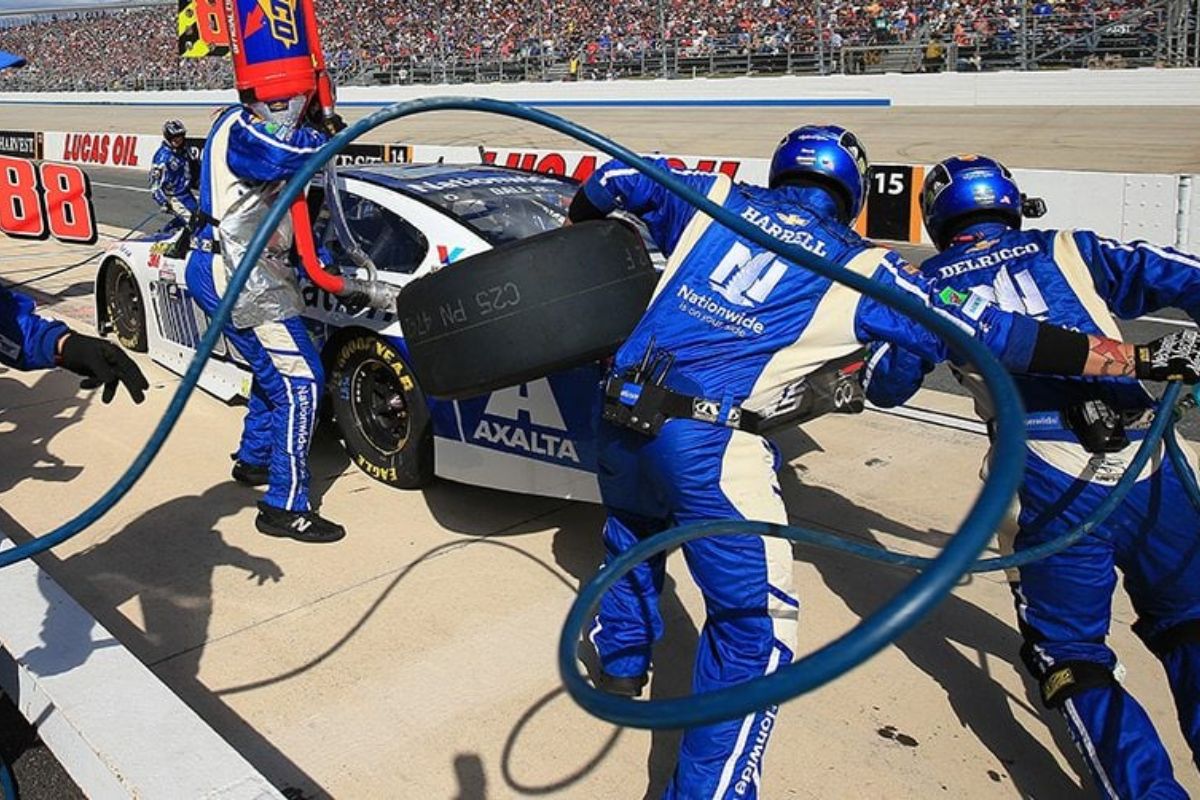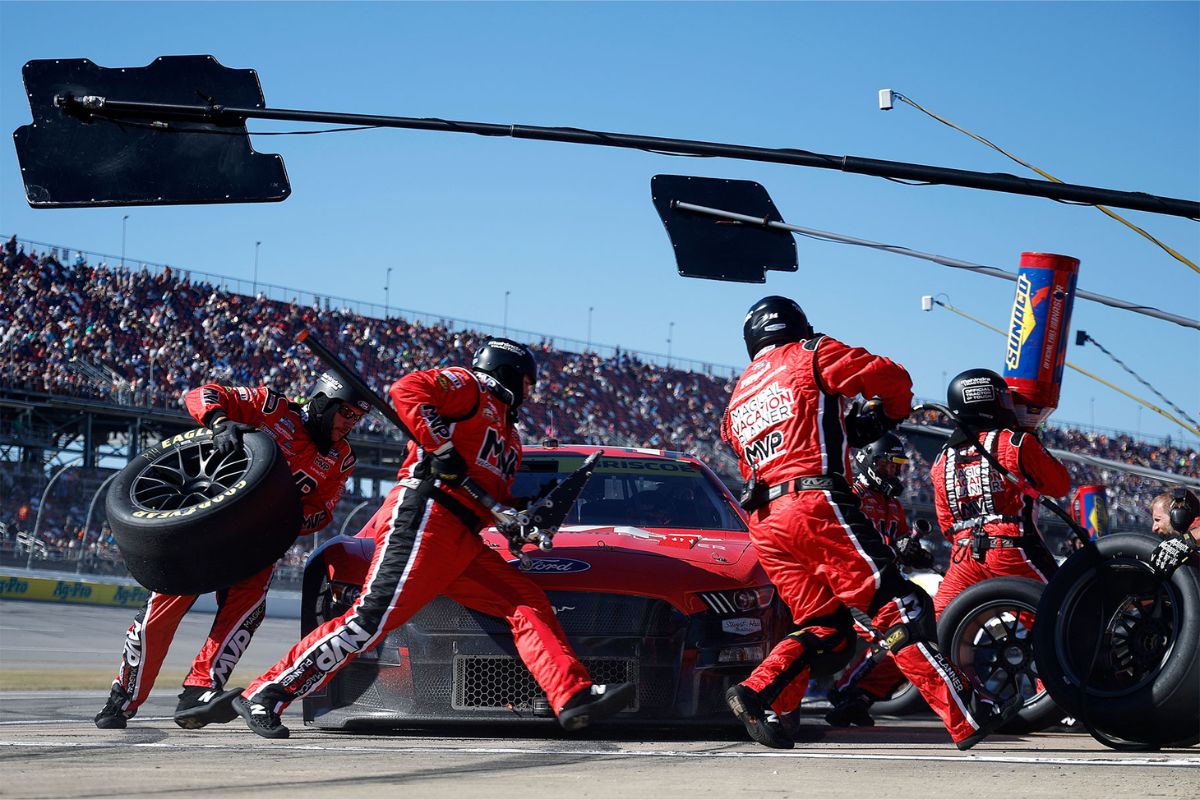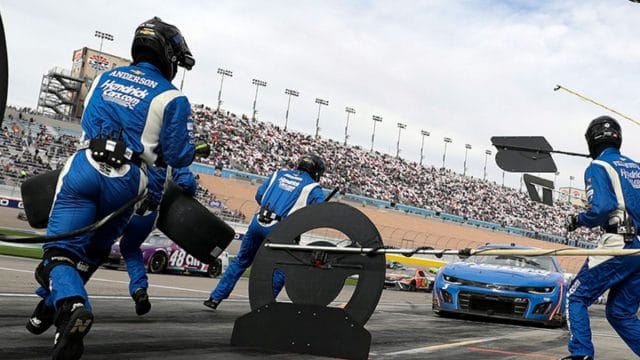NASCAR Pit Crew Blunders: NASCAR pit crews are the unsung heroes of the racetrack, working swiftly and seamlessly to keep their drivers in the competition. However, behind the precision and choreography lies a lesser-known truth – pit crew blunders.
These split-second mistakes can turn a race around completely, leading to unexpected outcomes and leaving the fans and analysts questioning what went wrong.
The intricacies of pit stops can make or break a race, and understanding the surprising truths behind these mistakes sheds light on the high-stakes world of NASCAR pit road.
Overview of Pit Stops Impact in Las Vegas
Pit stops during the recent NASCAR race in Las Vegas emerged as a critical factor shaping the competition’s dynamics and ultimately determining the race’s outcome. The first intermediate course race of the 2024 NASCAR season showcased the pivotal role of pit stops, with 213 four-tire-change pit stops serving as a key differentiator between the successful teams and those encountering setbacks. Kevin Harvick, the 2014 Cup champion, highlighted the significance of pit stops on his podcast, Harvick Happy Hour, emphasizing the strategic importance of flawless execution in this aspect of the race.
Teams that efficiently navigated pit stops gained a competitive edge, showcasing the precision and coordination required for seamless tire changes and refueling. Pit crews played a crucial role in maximizing their driver’s performance by minimizing time spent in the pits, directly influencing track position and overall race strategy. As the race started in Las Vegas, the impact of pit stops became increasingly apparent, showing the critical nature of this aspect in NASCAR competition.

Notable Pit Road Incidents
During the recent NASCAR race in Las Vegas, several noteworthy incidents happened on the pit road, showcasing the impact of split-second decisions and meticulous precision in the high-stakes environment of professional racing.
- The #8 Richard Childress Racing team and driver Kyle Busch faced a pass-through penalty for the splitter crossing the pit stall line.
- Tyler Reddick’s #45 team encountered delays during their pit stop.
- Chris Buescher’s #17 team received a penalty due to an improperly secured right front tire.
- Pit crews had to navigate the pressure of quick decisions while maintaining precision.
- These incidents highlight the fine margin between success and penalties on the pit road, emphasizing the crucial role of teamwork and attention to detail in NASCAR races.
In the dynamic world of NASCAR pit stops, where seconds can make the difference between victory and defeat, these incidents serve as reminders of the intense pressure and strategic calculations that pit crews face during each race.
Challenges of Las Vegas Pit Road
Navigating the intricate corners and unique quad-oval configuration of the Las Vegas pit road presents a formidable challenge for the NASCAR drivers and pit crews. Kevin Harvick sheds light on the complexities of this 1.5-mile track’s pit road, emphasizing the tricky corners that demand precision and skill. One of the key issues highlighted by Harvick is the slipperiness of the pit box, which can significantly impact a driver’s control when entering or exiting. This factor was highlighted by Kyle Busch’s penalty for sliding through the pit road, showcasing how even seasoned drivers can fall victim to the challenges posed by the Las Vegas pit road.
The quad-oval configuration further adds to the intricacy of the pit road, requiring teams to adapt quickly to the changing track conditions. Pit crews must anticipate these nuances to execute flawless pit stops, as any mis-step can cost valuable time on a track known for its fast-paced action. Mastering the challenges of the Las Vegas pit road is a test of skill, communication, and adaptability for both the drivers and pit crews striving for success in the high-stakes world of NASCAR racing.
News in Brief
NASCAR pit crews, often unsung heroes, faced intense scrutiny during the recent Las Vegas race, where split-second decisions shaped outcomes. The 213 four-tire-change pit stops proved pivotal, showcasing the strategic importance of flawless execution. Kevin Harvick stressed the impact on his podcast, emphasizing pit stops as a key differentiator. Noteworthy incidents included penalties for Kyle Busch’s #8 team and Chris Buescher’s #17 team, underscoring the fine margin between success and penalties. Navigating the challenging Las Vegas pit road, with its slippery corners and quad-oval configuration, proved a formidable task for drivers and pit crews. These incidents highlight the intense pressure and strategic calculations in the high-stakes world of NASCAR pit stops.

Our Reader’s Queries
Q. What does the average pit crew member make in NASCAR?
A. NASCAR Pit Crew Person Salary Breakdown:
Q. What is the leader of a pit crew called?
A. The crew chief plays a pivotal role in coordinating the pit crew’s actions, working closely with the driver, and simultaneously analyzing the televised broadcast of the race through strategically placed flat-screen monitors within the pit box. This multitasking ensures effective communication and informed decision-making during the race.
Q. Why are NASCAR pit stops slower?
A. NASCAR pit stops were historically slowed down by the requirement of five lug nuts on each wheel. However, with the introduction of the Generation 7 car, this process has been significantly expedited, as now only one lug nut is needed per wheel. This modification has notably reduced the time spent on pit stops. In 2022, Kyle Busch’s crew set a new Cup Series record with an impressive 8.96-second stop at the Kansas Motor Speedway, showcasing the enhanced efficiency brought about by this change.
ALSO READ: Kyle Busch’s Pit Crew Changes: Game-Changer or More Drama?
